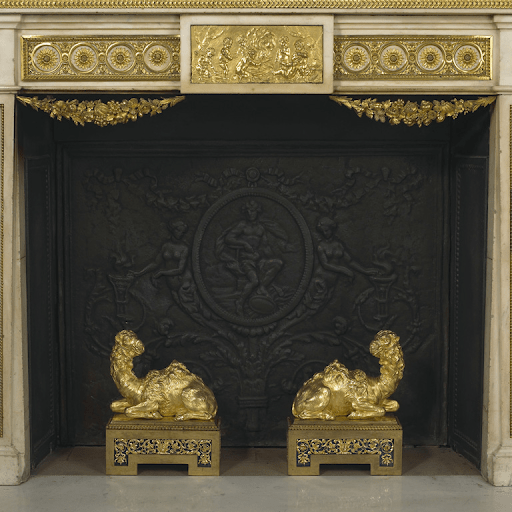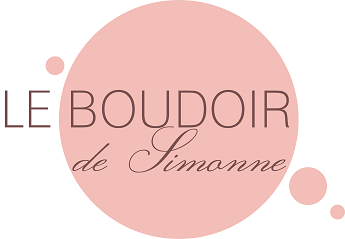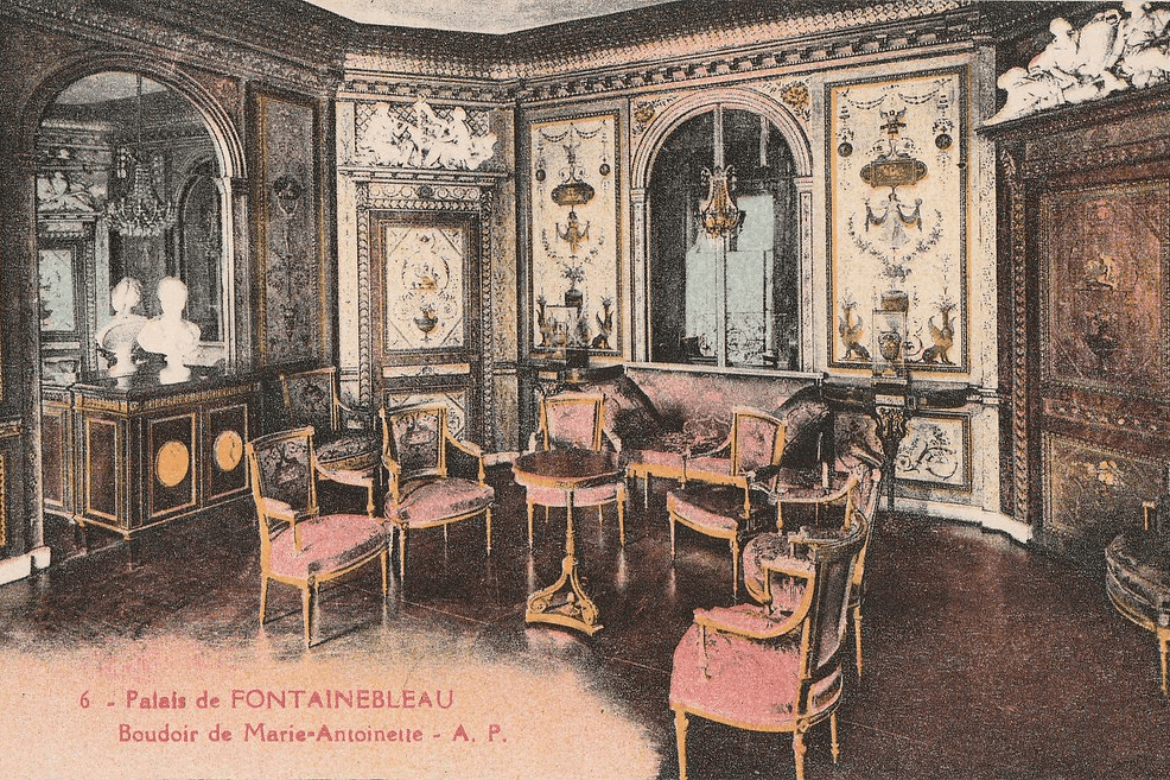Marie-Antoinette's secret boudoir: a living treasure
In a very small room on the mezzanine of the Palace of Fontainebleau, Marie-Antoinette dreamed of a sophisticated and secret boudoir where she could hide away from etiquette.
It was something of a hiding place, a hiding place for a queen and then an empress. Since these boudoirs disappeared from Versailles, this charming jewel is the last example of the royal oriental elements so prized after Louis XV opened the doors of the Ottoman Empire to the French.
In 1777, Marie-Antoinette, only 22 years old, wanted to modernize the rooms created before her for Queen Marie Leszczynska at Fontainebleau. In a small room on the mezzanine, she dreamed of a sophisticated and secret boudoir, where she could hide away from etiquette and taste the charms of the East that intoxicated the aristocrats. Then the greatest artists gathered to make her wish come true. The first architect, Richard Miquet, drew up the plans and delegated the work to Nicolas-Marie Potaine, the newly appointed administrator of the King's buildings at Fontainebleau. He called on the best craftsmen: the Rousseau brothers were responsible for the painted and sculpted decorations of the paneling. Cupids, butterflies and other elements mingled with turbans, busts of eunuchs, feathers, swords, lunar crescents... The marble maker Bocciardi and the bronze maker Pierre Gutierrez joined forces to create a delicate white marble fireplace decorated with a bronze leaf frieze , stars and ears of corn, which were also called Turkish wheat...
The queen wanted it lit up at night and the lights behind the Turkish-style bed reflected on the window opposite. Ingenious craftsman Jean-Toby Merclin designed a mechanism that allowed the window overlooking Diana's garden to be hidden behind a mirror. All the queen had to do was pull a rope to release the mirror and press a button to slide it into the partition. This smart system still exists and has even been restored.
For Marie-Antoinette's Turkish boudoir, exquisite furniture was selected from her personal storage room. Unfortunately, we do not know the details because everything was scattered during the sales after the revolution. Only two bronze statuettes - camels, kept in the Louvre Museum ...

In his Memoirs of a Page of the Court of Louis XVI, Comte d'Ezek describes the boudoir as follows: "I have preserved the memory of a small study of the Queen, furnished in the Oriental style, lit in the evening by lamps placed in a closet separated from the study with a large mirror lined with taffeta, the color of which can be changed at will; this gave as soft a light as the reflection was pleasant. "
In 1804, Josephine inherited the royal boudoir, and she liked it. She decided to turn it into a small bedroom. Two years later, the boudoir acquired new furniture, specially created in the workshop of Jacob-Desmalter. The "nail" of this new furniture was a large bed in a mahogany niche. Hounds sat on either side watching the empress's sleep. At the waist, two cupids firmly hold the reins of an ancient chariot lowered into a gallop, and in the center, in a medallion surrounded by double palmettes, an eagle seated on a bowl heralds the arrival of Hebe, the goddess of youth. Stars remind those of the paneling. Two bergère armchairs, couch; or chaise-longue—called at the time an "apple tree," a footstool, four gondola chairs, a fireplace, and a small table, equally ornately decorated, completed the furnishing. Exoticism was no longer felt so much in the furniture and objects as in the richness and mixing of fabrics. The mysterious and sensual Orient was suggested above all by the gold mixed with each of the materials.

Boudoir in the Palace of Fontainebleau, restored by Josephine
Pico, responsible for embroideries in the imperial court, provided for the niche and the window a cotton muslin strewn with poppies, palmettos, myrtle wreaths and laurel branches. Other gilded white taffeta curtains were held tight with gold fringed ties and attached to gilded bronze crescents. Above the alcove was a silk drapery edged with gold fringe.
On the window, the fabrics were overlaid in the same way, matching the luster of the niche fabrics. The most valuable material in the boudoir was perhaps the velvet with which the furniture was upholstered. "Resembling the so-called 'miniature velvets' of the late 18th century, it is decorated with an intricate geometric design reminiscent of the Egyptian expedition," said Vincent Cochet, Curator of Heritage at the Palace of Fontainebleau.
After Josephine, Marie-Louise took possession of the small apartments on the mezzanine, including the Turkish boudoir. But she used it very rarely. Under this monarchy, the boudoir was used for the accommodation of maids, and then it housed the treasurer of the Empress Eugenia ... Since then, these rooms have ceased to be used.
The furniture has reached the 21st century in fairly good condition. The mahogany and bronzes have been cleaned and renovated, the lacquers restored by the palace restoration studios. The condition of the tissues turns out to be more problematic in the restoration. "We try to preserve the originals as much as possible," explains Vincent Cochet. "We were able to keep the original trim of the window and niche. The embroidered muslins were washed with neutral soap and the gold ornaments were re-stitched to each piece. The taffeta curtains, tattered as they are, were dismantled and their facings reassembled in the same manner over new taffeta. Textile restorer Isabel Bedat was responsible for this meticulous work. "
On the other hand, the curators of Fontainebleau have chosen the Declercq house for the restoration of the upholstery of the chairs and armchairs. Their expensive velvet is also woven identical to the originals. The old fabrics remain piously preserved in the reserves of the house, the new ones contribute to restoring the oriental splendor of the boudoir.
silk velvet trimmed plain white body with gold blade lancet grill.
How many people today can weave "white silk velvet with a lancet grid of gold blade"? They are counted on the fingers of one hand. It is because of its know-how that this operation entrusted to the production of Tassinari et Chatel. The lack of masters in the workshop at the time of the request, however, redirects to the atelier of Anies Aloze. She is the heir to the tradition of the Lyon silk weavers and works on a loom with jacquard mechanism from the end of the 19th century. It took her almost six months to create the perfect conditions to work on the restoration commissioned by the palace. He had to fill and assemble the dozens of spools of silk thread mounted in a wooden box. Then adjust all the weights – one per reel! Then to engage with the connecting chains, etc.
Finally, there is weaving to be done, going into that great wooden cage that is the loom, going over and smoothing the shuttles with the hands while the feet play on the pedal. Agnes' body danced from right to left. Creating the same background effect as in the original suede is difficult. You have to find the right rhythm, the right gesture, to feel it, to stop, to look at the strip of velvet that advances little by little, and she is happy when she has woven the eight centimeters a day. Neither the shoulder tendon nor the osteoarthritis that attacks her hands prevents Anies from doing this physical profession. With her hands, with the movement of her feet, she creates magnificent fabrics. And so, until finally providing 28 meters to the palace!
With all these details, we understand how long and complicated it is for the preserved elements of the past to reach us. But it's worth it.
Here you can discover the boudoir of Marie-Antoinette. https://www.youtube.com/watch?v=sB7llZE8690&
The text is borrowed from the files with historical themes of Figaro village



